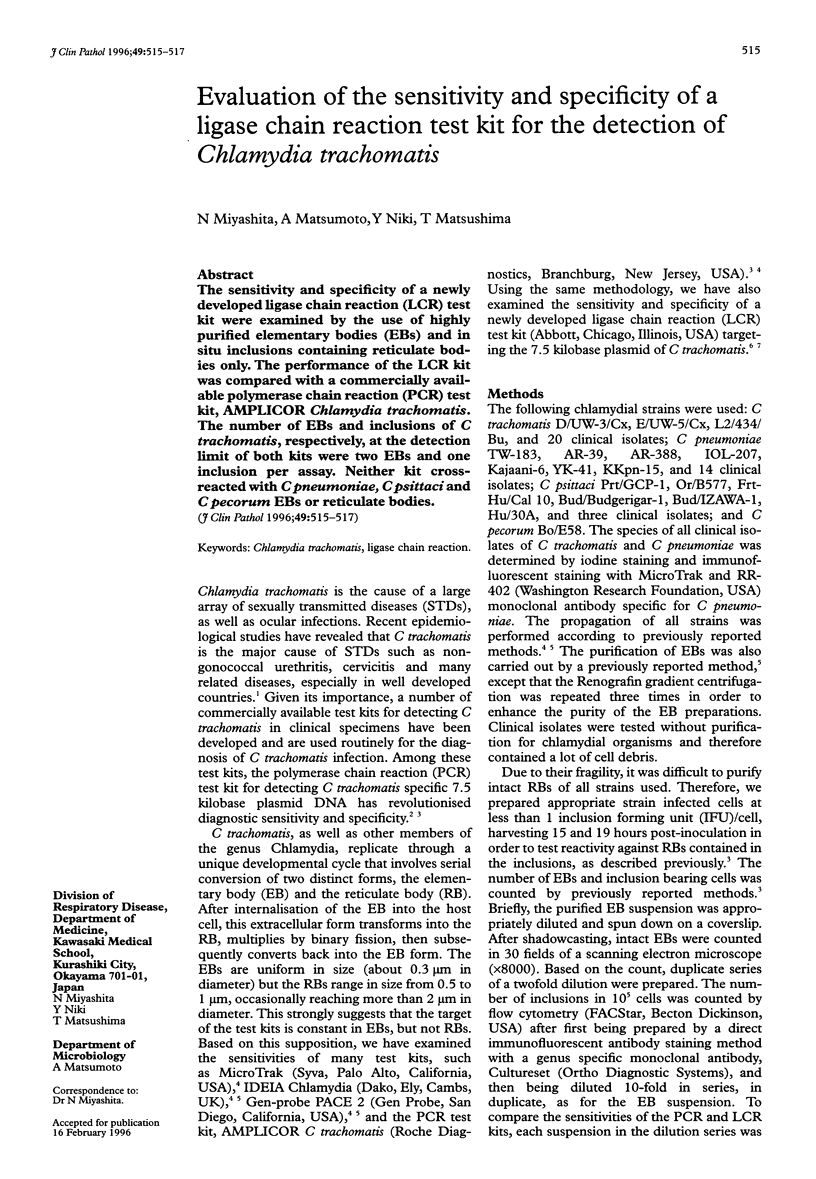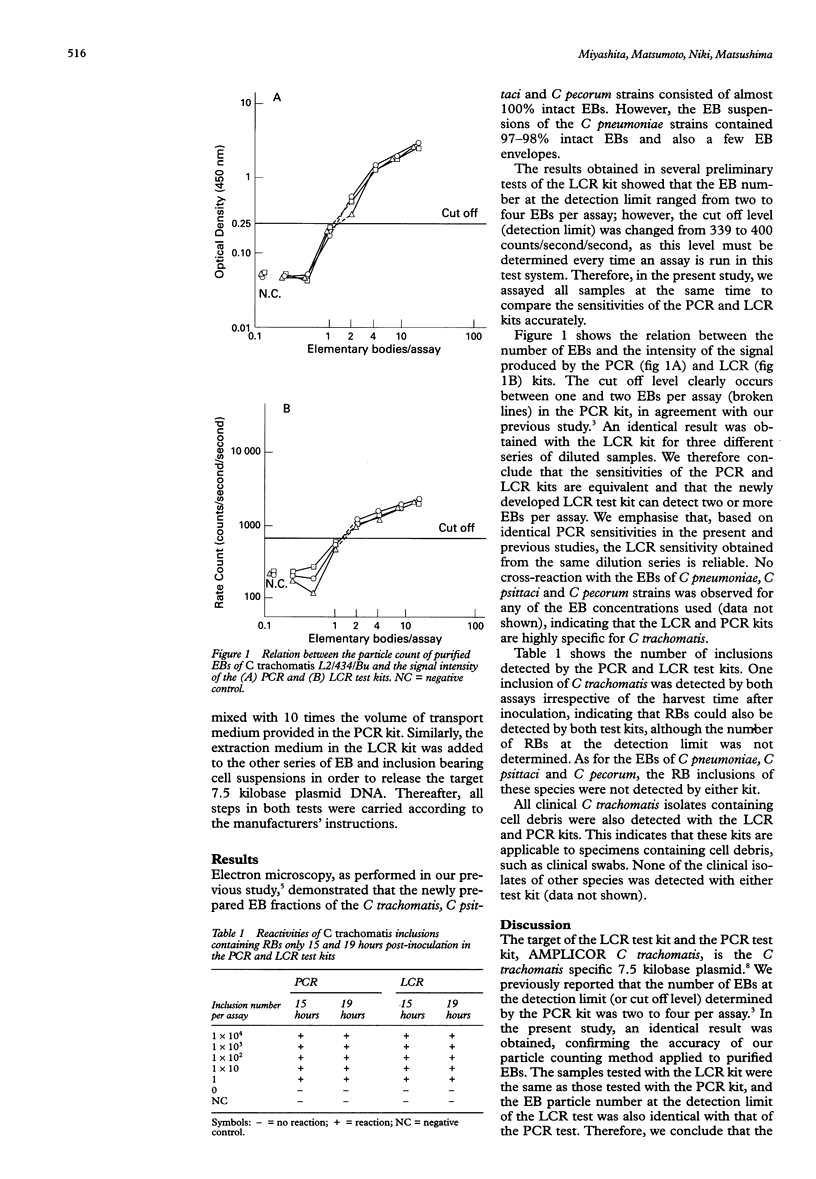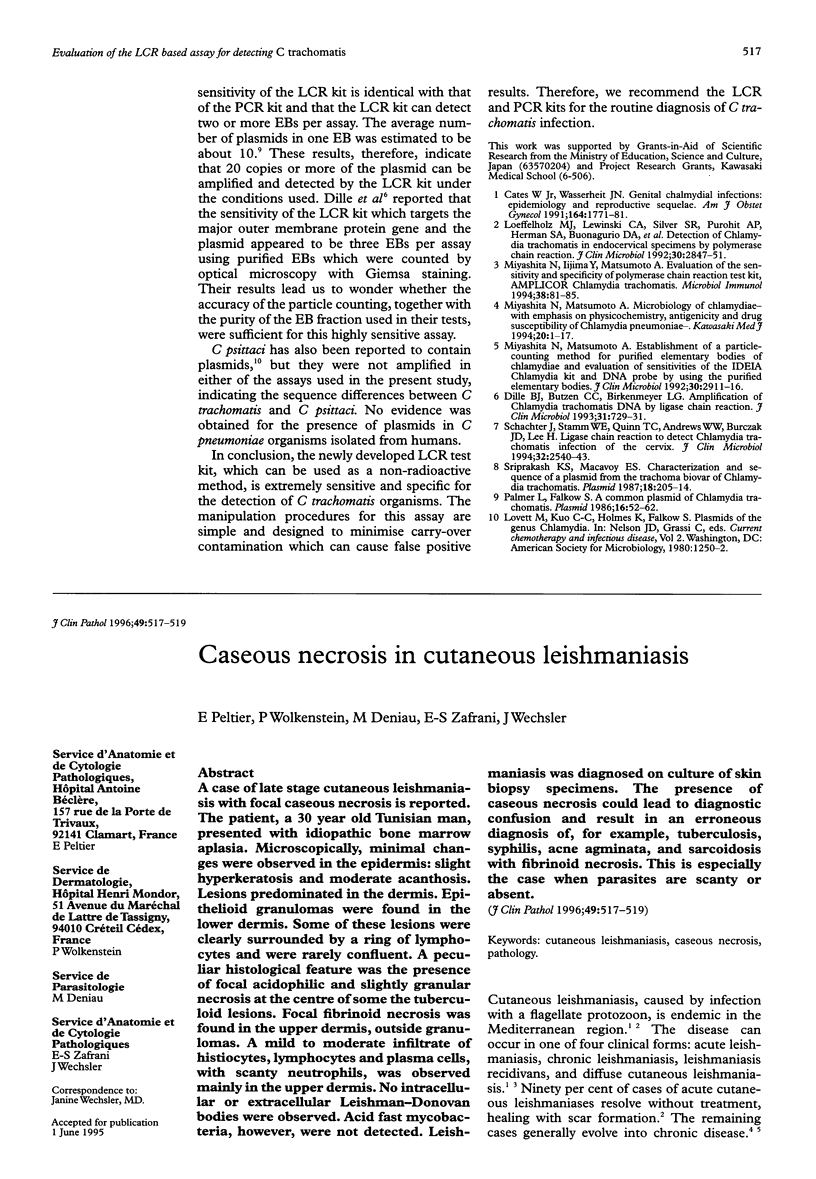Abstract
The sensitivity and specificity of a newly developed ligase chain reaction (LCR) test kit were examined by the use of highly purified elementary bodies (EBs) and in situ inclusions containing reticulate bodies only. The performance of the LCR kit was compared with a commercially available polymerase chain reaction (PCR) test kit, AMPLICOR Chlamydia trachomatis. The number of EBs and inclusions of C trachomatis, respectively, at the detection limit of both kits were two EBs and one inclusion per assay. Neither kit cross-reacted with C pneumoniae, C psittaci and C pecorum EBs or reticulate bodies.
Full text
PDF


Selected References
These references are in PubMed. This may not be the complete list of references from this article.
- Cates W., Jr, Wasserheit J. N. Genital chlamydial infections: epidemiology and reproductive sequelae. Am J Obstet Gynecol. 1991 Jun;164(6 Pt 2):1771–1781. doi: 10.1016/0002-9378(91)90559-a. [DOI] [PubMed] [Google Scholar]
- Dille B. J., Butzen C. C., Birkenmeyer L. G. Amplification of Chlamydia trachomatis DNA by ligase chain reaction. J Clin Microbiol. 1993 Mar;31(3):729–731. doi: 10.1128/jcm.31.3.729-731.1993. [DOI] [PMC free article] [PubMed] [Google Scholar]
- Loeffelholz M. J., Lewinski C. A., Silver S. R., Purohit A. P., Herman S. A., Buonagurio D. A., Dragon E. A. Detection of Chlamydia trachomatis in endocervical specimens by polymerase chain reaction. J Clin Microbiol. 1992 Nov;30(11):2847–2851. doi: 10.1128/jcm.30.11.2847-2851.1992. [DOI] [PMC free article] [PubMed] [Google Scholar]
- Miyashita N., Lijima Y., Matsumoto A. Evaluation of the sensitivity and specificity of polymerase chain reaction test kit, AMPLICOR Chlamydia trachomatis. Microbiol Immunol. 1994;38(1):81–85. doi: 10.1111/j.1348-0421.1994.tb01747.x. [DOI] [PubMed] [Google Scholar]
- Miyashita N., Matsumoto A. Establishment of a particle-counting method for purified elementary bodies of chlamydiae and evaluation of sensitivities of the IDEIA Chlamydia kit and DNA probe by using the purified elementary bodies. J Clin Microbiol. 1992 Nov;30(11):2911–2916. doi: 10.1128/jcm.30.11.2911-2916.1992. [DOI] [PMC free article] [PubMed] [Google Scholar]
- Palmer L., Falkow S. A common plasmid of Chlamydia trachomatis. Plasmid. 1986 Jul;16(1):52–62. doi: 10.1016/0147-619x(86)90079-x. [DOI] [PubMed] [Google Scholar]
- Schachter J., Stamm W. E., Quinn T. C., Andrews W. W., Burczak J. D., Lee H. H. Ligase chain reaction to detect Chlamydia trachomatis infection of the cervix. J Clin Microbiol. 1994 Oct;32(10):2540–2543. doi: 10.1128/jcm.32.10.2540-2543.1994. [DOI] [PMC free article] [PubMed] [Google Scholar]
- Sriprakash K. S., Macavoy E. S. Characterization and sequence of a plasmid from the trachoma biovar of Chlamydia trachomatis. Plasmid. 1987 Nov;18(3):205–214. doi: 10.1016/0147-619x(87)90063-1. [DOI] [PubMed] [Google Scholar]


